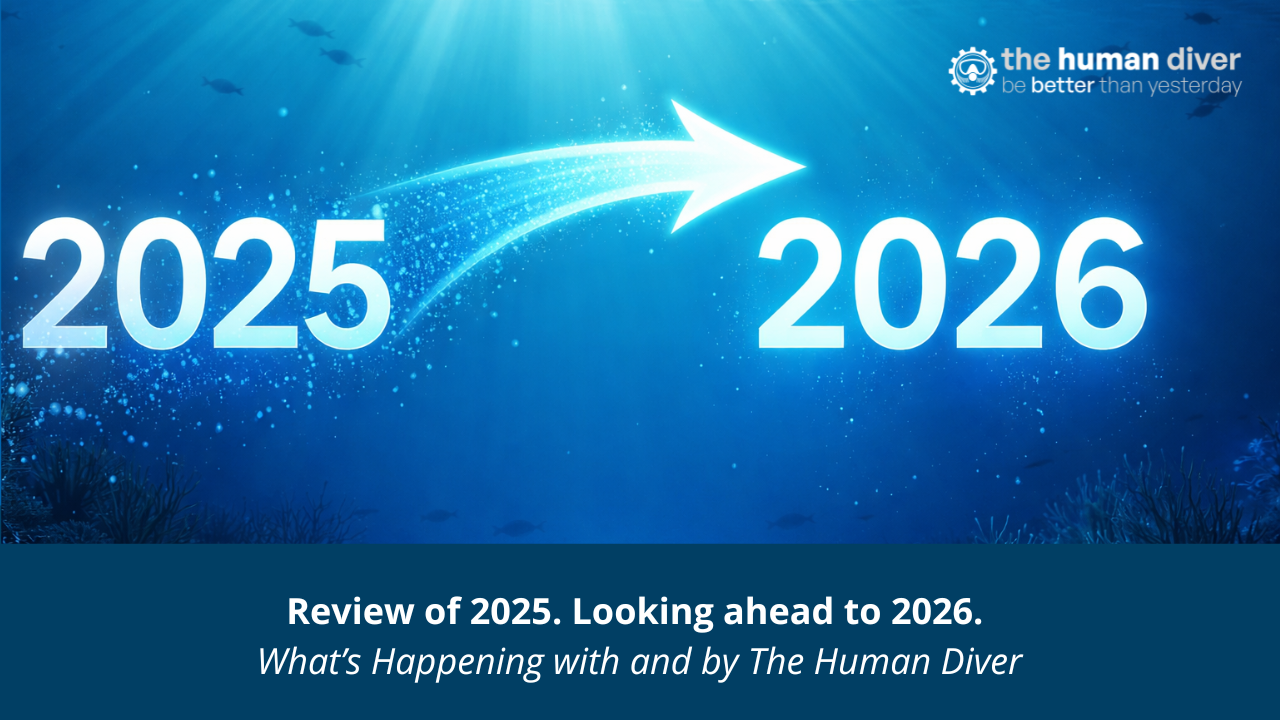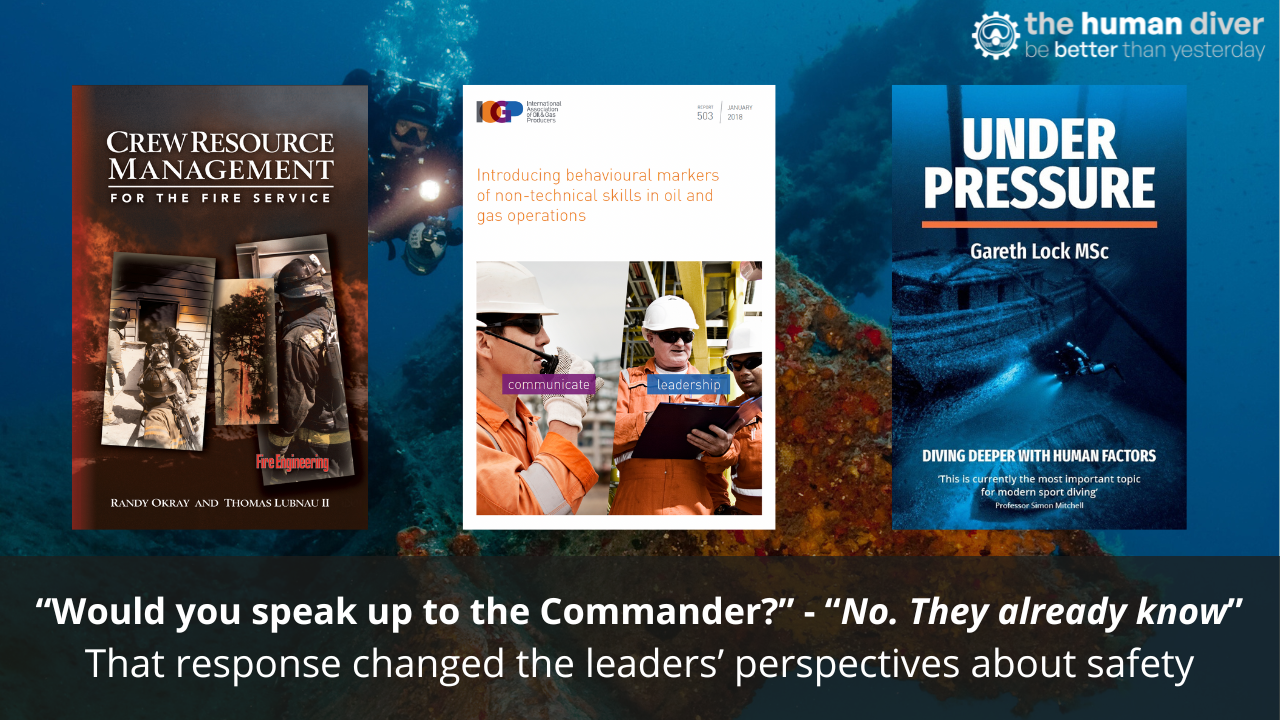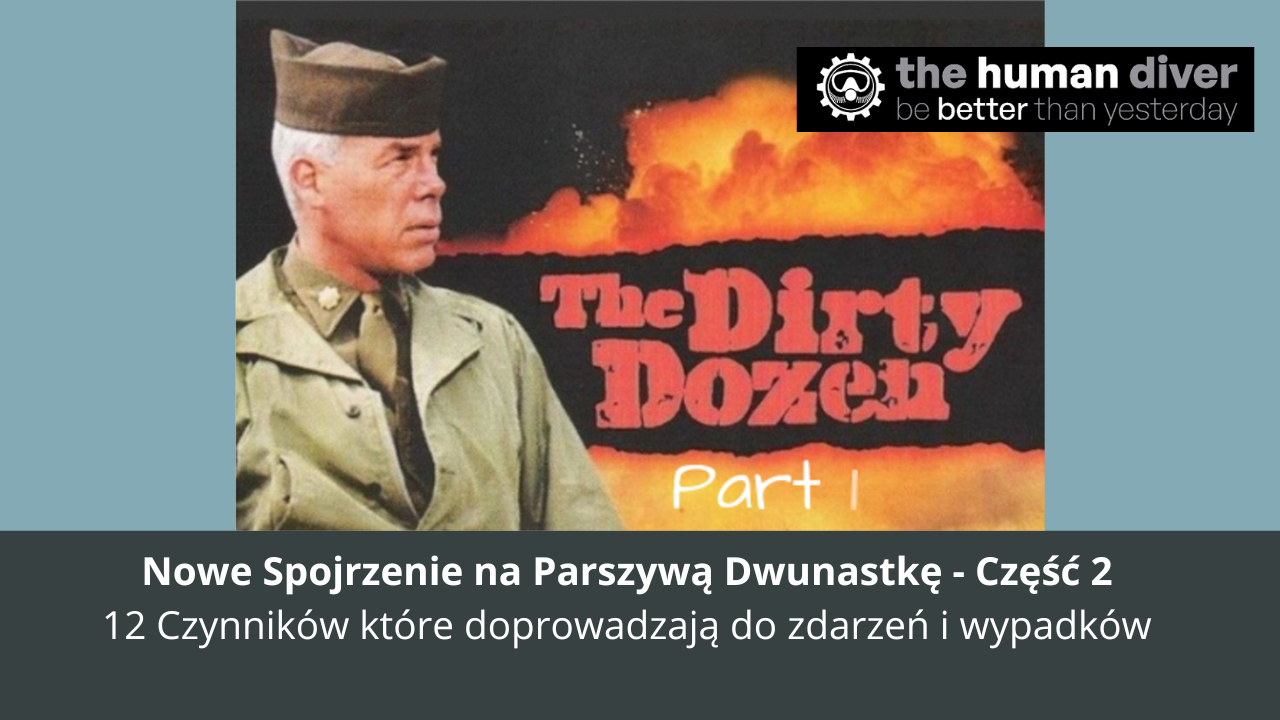
Survival instinct: Reaction to stress
Apr 27, 2024Dealing with the demands of diving in highly stressful situations is no small feat. The allure of excitement and the desire for exploration are often what draw people to this discipline. However, with each dive comes the inherent risk of encountering situations that are not only stressful but potentially life-threatening. Being well-trained and familiar with the risks, knowing procedures, and possessing the skills to take (appropriate) actions are not the only aspects. The real challenge often lies in maintaining composure under extreme pressure in hazardous situations. The ability to remain focused and execute learned strategies amidst chaos is not just a skill; it's an essential tool in a diver's kit.
In critical, life-threatening scenarios, our stress response can kick into high gear. Our bodies are flooded with adrenaline, increasing our alertness and preparing us to confront or flee from danger - the basic fight or flight response. This reaction can be beneficial, providing a surge of energy to escape dangerous situations. However, if the key to saving our own lives lies not in fighting or fleeing, but rather in clear, focused thinking and deep awareness of our surroundings?
Unfortunately, our stress response remains unchanged. Our system will continue to be flooded with the same hormones and adrenaline, potentially overwhelming us and disrupting our thought process. In such moments, when the stakes are high, the ability to maintain calmness and logical thinking is crucial. That's why mastering strategies for effectively coping with such intense stress reactions is so important. Through proper training, one can prepare to maintain clarity of mind and make sound decisions, even when the internal alarm is blaring in our heads.
The following tips can help divers when they find themselves in a difficult situation - they are aimed at streamlining the decision-making process, coping with tension, and enhancing overall mental resilience in situations of extreme stress.

Controlled breathing
Life-threatening situations naturally induce strong tension and can lead to panic. Accelerated heart rate, shallow breathing, impaired concentration, and narrowed field of vision are common symptoms. Reduced respiratory efficiency can lead to hyperventilation, meaning excessive production of carbon dioxide. This can impair both physical and cognitive functioning. Therefore, the first step in coping with acute stress is controlling your breath.
Slowing down your breathing, tactical breathing, and prolonged exhalation are examples you may have heard of that can help you calm down. In a life-threatening situation, any of these methods is better than none, but based on the information below, you can develop your own preferred techniques.
Slow, deep breathing can help slow down your heart rate, increase oxygen flow, and control your stress response. In one study, slow, deep breathing, regardless of how it was performed, reduced the biological stress response during simulated active shooting exercises (Dillard at al., 2023). In another study, slow, rhythmic breathing proved to be a promising technique for improving executive functioning, allowing us to focus, retrieve information from memory, plan, and effectively handle multiple tasks (Laborde et al., 2021).
Tactical breathing is a popular technique used in the military to help maintain calmness, focus, and control under stress. This technique suggests a pattern of 4-4-4-4 (four seconds inhale, hold, exhale, and pause), repeated in a loop.
In one study, tactical breathing was compared with simple prolonged exhalation. This was done in laboratory conditions where individuals were engaged in a challenging cognitive task under time pressure and distracted by noise (Röttger et al., 2021). The results suggested that individuals using tactical breathing showed lower physiological arousal, but those using prolonged exhalation performed better on the cognitive task. Therefore, a diver may want to consider using prolonged exhalation when actively coping while also asking their brain for help in focusing and dealing with something that may improve the situation.
Controlled thinking
In life-threatening situations, it's important to focus on what can be immediately controlled instead of getting distracted by "what-if" thoughts. Contemplating what might happen if things go wrong, though tempting, can distract and divert attention from necessary action. Instead, redirecting thoughts to the present moment - focusing on "self-rescue operation" mindset - can be more beneficial. By consciously dismissing unhelpful thoughts and focusing on actionable steps, you enhance your ability to make clear, decisive choices that are essential for your and the safety team's survival.

Continuous training
Of course, it's impossible to predict exactly when, where, and how such events will occur. However, continuous training helps to automatize reactions, reducing cognitive load during incidents of high stress (Driskell & Salas, 1996). To better simulate such situations, techniques such as Stress Inoculation Training (SIT) should be considered. SIT is a method that gradually exposes individuals to stressful conditions in a controlled environment. Imagine transforming skill training into a timed task with loud, distracting music, while people have to solve problems. This technique helps build stress tolerance and improve performance under pressure. Driskell, Johnston, and Salas (1999) found that SIT effectively increases performance in high-stress tasks by reducing anxiety and improving concentration. In diving, methods such as task overload and multiple emergencies under pressure can be used. This is often a component of advanced technical training - and when combined with non-technical skill training and psychological skill training, it strengthens resilience to stress in threatening situations.
It's hard to ignore the fact that staying focused in chaotic conditions underscores the importance of mental presence, something that concentration training and meditation help develop. Concentration exercises and meditation have been shown to improve emotional regulation as well as cognitive concentration during stressful situations. A review of studies (Jha, Stanley, & Baime, 2010) found that mindfulness training can increase the ability to maintain focus amidst distracting factors. Continuous mindfulness and meditation practice not only greatly impacts health and overall stress reduction but can also help develop certain skills that may be useful if you ever find yourself in life-threatening situations.
Summary
Mastering control over breathing, learning to block out distracting factors, developing non-technical skills, and engaging in rigorous training for rare but very real life-threatening situations we may encounter while diving are crucial. These practices will not only improve physical readiness but also increase mental resilience, enhance situational awareness, and help us compel ourselves to think, ensuring optimal performance under pressure. This holistic approach to readiness isn't just about survival; it's about functioning efficiently when it matters most.
References
1. Dillard CC, Martaindale H, Hunter SD, McAllister MJ. “Slow Breathing Reduces Biomarkers of Stress in Response to a Virtual Reality Active Shooter Training Drill.” Healthcare. 2023; 11(16):2351.
2. Driskell, J. E., Johnston, J. H., & Salas, E. “Does Stress Training Generalize to Novel Settings?” Human Factors. 1999; 41(1), 99-110.
3. Driskell, J. E., & Salas, E. “Stress and Human Performance.” 1996. Lawrence Erlbaum Associates.
4. Jha, A.P., Stanley, E.A., & Baime, M.J. “The Benefits of Mindfulness Meditation in Improving Performance in High-Stress Situations.” Mindfulness. 2010; 1(2), 95-103.
5. Laborde, S., Allen, M.S., Borges, U., Hosang, T.J., Furley, P., Mosley, E., & Dosseville, F. “The Influence of Slow-Paced Breathing on Executive Function.” Journal of Psychophysiology. 2021; 36(1).
6. Röttger, S., Theobald, D.A., Abendroth, J. et al. “The Effectiveness of Combat Tactical Breathing as Compared with Prolonged Exhalation.” Appl Psychophysiol Biofeedback. 2021; 46, 19–28.
Drawing from materials for emergency responders.

Andrzej is a technical diving and closed circuit rebreather diving instructor. He works as a safety and performance consultant in the diving industry. With a background in psychology specializing in social psychology and safety psychology, his main interests in these fields are related to human performance in extreme environments and building high-performance teams. Andrzej completed postgraduate studies in underwater archaeology and gained experience as a diving safety officer (DSO) responsible for diving safety in scientific projects. Since 2023, he has been an instructor in Human Factors and leads the Polish branch of The Human Factors. You can find more about him at www.podcisnieniem.com.pl
Want to learn more about this article or have questions? Contact us.










